There is one other way to explore Algonquin - if you're lucky enough to have access to the interior logging roads closed to the public, you can drive right through the interior and into some spots that would take days to get to on canoe. And many of these spots offer incredible birding.
Yesterday some of the crew - Katsu Sakuma, Dawn Sherman, Ian Shanahan and myself went into the interior to see what there is to be seen. It still takes several hours to get there, but we knew the rewards could be incredible.
The day started off pretty well, even on the West Side of the Park. As we were heading out in the early morning, the first bird of the day was Great Gray Owl on the road.

Dawn had been trying to catch up with this bird many times, but it never cooperated until today. It's been moving around a lot lately, and has nearly ended up as road jerky a couple of times. Hopefully it'll reach its second year. We watched it for a few minutes and continued towards our quarry.
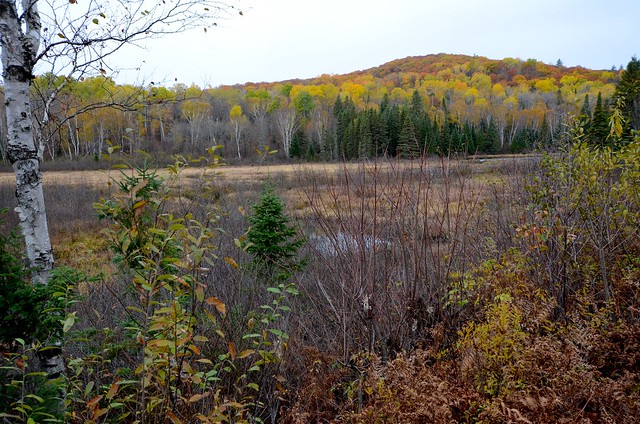
The East Side of Algonquin is a quiet, beautiful place - the interior seeing very few people other than loggers and hunters out for the big bulls at this time of year. Much of the maples are now replaced by poplars, oaks and three species of pine, all three preferring the well-drained, sandier soils of this lower elevation portion of the park. While the colors had all but disappeared from the Western Uplands, the subtle yellows and reds of the aspens and oaks was still very much in evidence on the East Side.
As we were driving along the logging roads, a large weasel crossed in front of our car.
"Holy sh!t - that was a Fisher."
It was going to be a good day.
We reached our first destination - the site of an old mill. It was a huge clearing in the middle of closed forest - any open-country bird migrating through will have to stop here. We had to put on blaze orange hats and vests as we were in moose country and didn't want to be mistaken for them! We were very excited, and even moreso when we noticed a flock of birds we very rarely see on the West Side - Eastern Bluebirds.

Sparrows were everywhere -
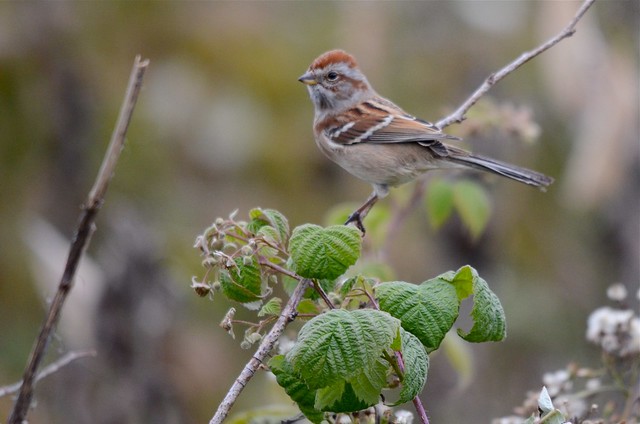
American Tree Sparrow
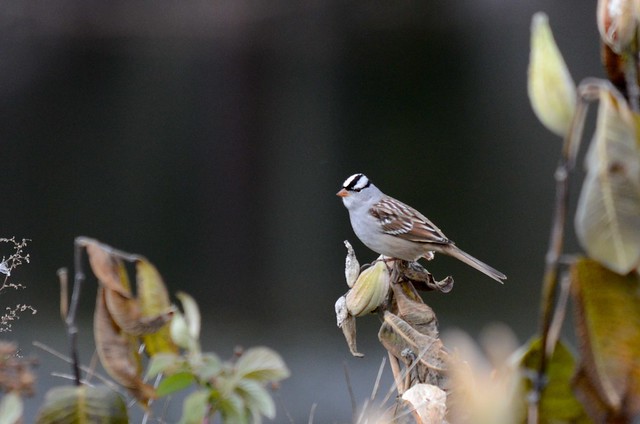
White-crowned Sparrow

Slate-colored Junco
Suddenly, I heard and then saw a different bird land in the long grass, and yelled:

"Lapland Longspur!"
These were lifers for two of us and we got excellent, close looks at them crawling around in the grass like mice. In my effort to photograph a Hoyt's Horned Lark that was with them, I nearly stepped on this one:
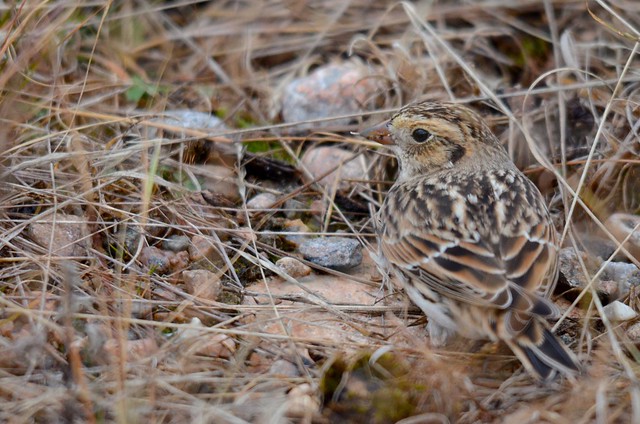
I never did get a picture of the pure Hoyt's, a beautiful, pale Horned Lark of the central Arctic, but we all got excellent looks at it - a much bigger bird than the other Horned Larks it was with, with an almost white throat and supercilium. I did however, get a picture of this likely hoyti x alpestris (Northern) Horned Lark integrade.
A fine looking lark, but not quite big enough and showing too much yellow to be a contender for pure Hoyt's. Ron Pittaway talks about Horned Lark subspecies in a great article that can be found here.
Between coursing the long grass like hounds, we looked to the skies every now and again for migrant raptors. We had a young Red-tailed Hawk, and two Sharp-shinned Hawks wing by, and then I saw something different.
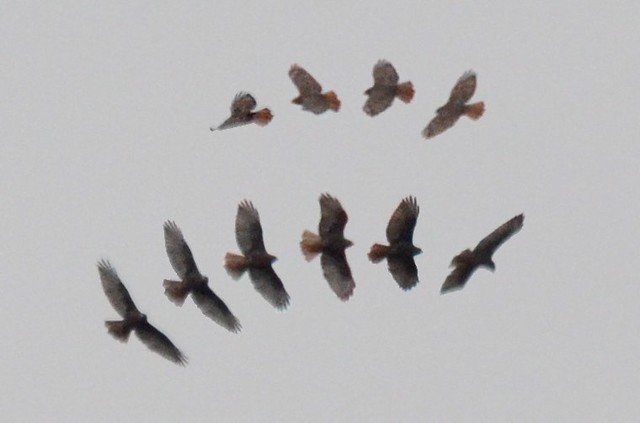
(This is a composite shot of the bird - many shots plastered together into one.)
It was a very dark Red-tailed Hawk. I immediately though harlani as Josh saw one earlier in the year in Moosonee (pictures on his blog here) However, it became clear quickly that it wasn't as it had a brick-red tail. This was still very exciting because this is not a common morph we see here - it is much more typical of the Western calurus subspecies and does not knowingly occur with the subspecies we get here most regularly - borealis. There is, however, another subspecies that breeds in the North, with a thick, dark belly band called abieticola. We see these mostly during migration in Southern Ontario, and this subspecies apparently has a rare dark morph, in which case this is most likely it. Jean Iron describes these more detail in the article found here.
After our adventure at this site, our list brimming with all sorts of goodies, we continued on to our next site -

Radiant Lake is located in the depths of Algonquin, but those who have reached it during the right time (a rainy day during migration) have been rewarded with shorebirds and waterfowl galore. For us, the weather was fine enough that we didn't get anything exceedingly rare, but we did get some nice looks at a big raft of Ring-necked Ducks.
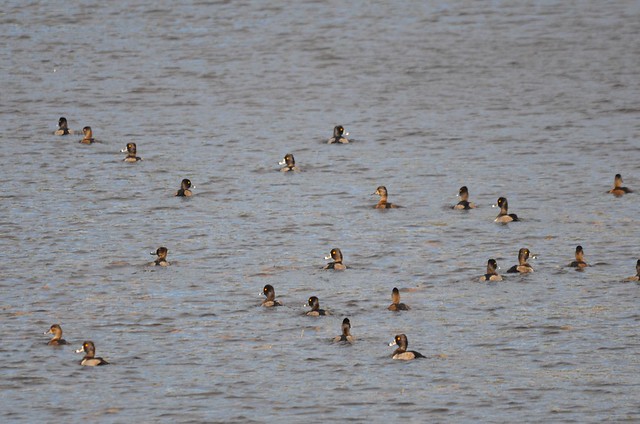
Suddenly, we heard a sound familiar to us from the West Side spruce forests - the nasal call notes of Boreal Chickadee. This was not normal here - the forests here are pine and oak, not regular breeding habitat for this chickadee. The bird was moving very rapidly, calling as it went, until it continued along the lake till we couldn't detect it any further. Likely a migrant. Still, a very good record for the East Side.
The next lake on our journey was one that was reachable by public access, and that is perhaps my favourite lake in the entire park - Lake Travers (pronounced Tra-vair).
In particular, we were interested in the Travers Marsh, which was a massive cattail marsh one has to do a bit of bushwhacking to get to, but like Radiant, usually held some goodies.
The Marsh looked beautiful today. The dark weather made the colors really pop. We went in to see what we could scare out of the cattails and sedges.
A small flock of White-winged Scoters flew by. A pair of Red-necked Grebes were out in the bay. We flushed a Wilson's Snipe. Life was good.
Suddenly, we flushed a sparrow.
"Swamp"
And then another.
"Swamp"
and another.
"Swamp"
The next sparrow we flushed was different. Short-tailed, pale-backed and flew very low, and dropped like a rock into a group of sedges. We all quietly surrounded the place where it landed, and then I saw the bird crawling around a few inches away from my feet. We were looking at Le Conte's Sparrow - a specialty of the Travers Marsh at this time of year.
We flushed it a few more times until everyone had a good look, and the bird at one point emerged from the reeds in full view -
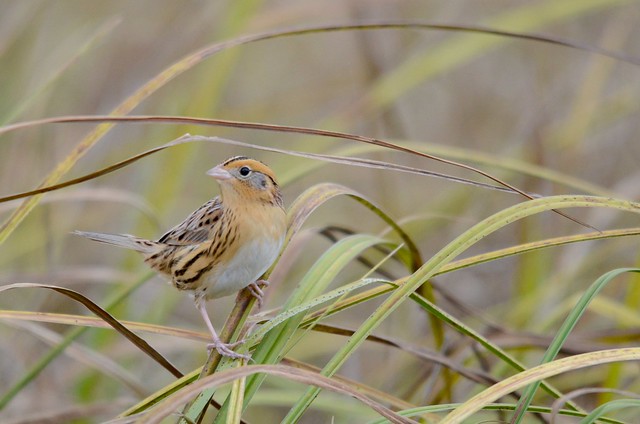
The definition of subtle beauty. What an awesome bird. There was no hesitation to crown this lovely little sparrow as the bird of the day, though the longspurs were also contenders.
Everyone was a happy (if not sopping wet) birder.
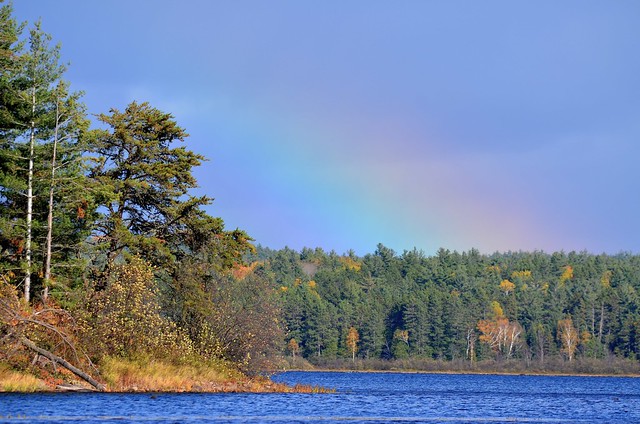
With the Le Conte's in the bag, we were all tired and it was getting dark, so we headed home. We stopped briefly for what was another highlight of the day - Dawn noticed something flying along the road, which proved to be a bat rather than a bird but upon closer inspection, it was a stunning, brick-red male Eastern Red Bat!!
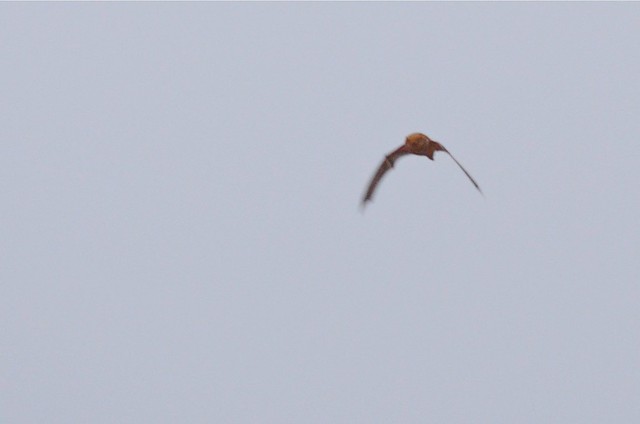
We saw a few more of them as well - likely migrating away from the park to places further south, and we saw another smaller bat that had a gliding flight - perhaps a Silver-haired Bat.
It took us five hours to get back to our side of the Park (remember when I said Algonquin was big?) and the place we were going to eat was closed, but all in all we agreed it was an incredible trip into this very little explored sanctum of Algonquin Park.

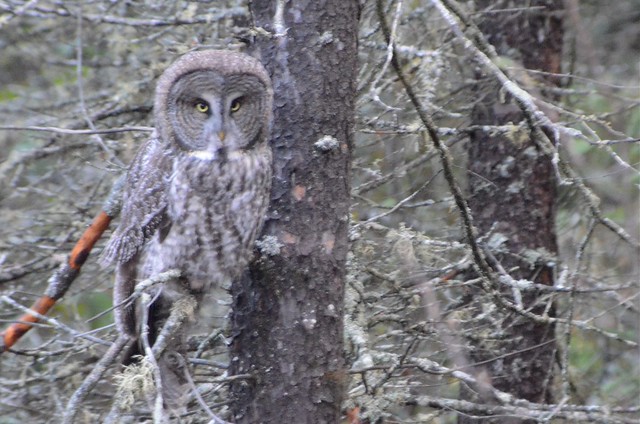
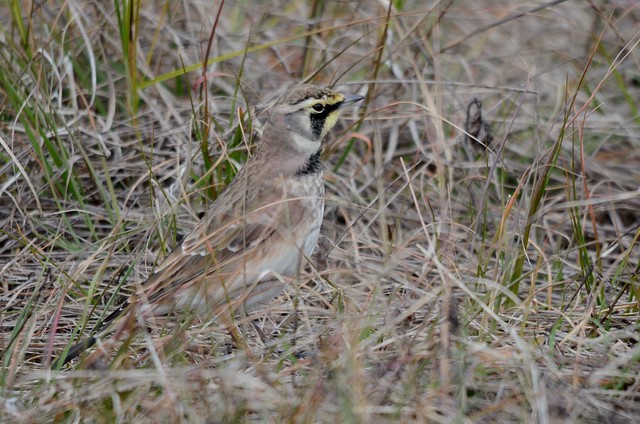

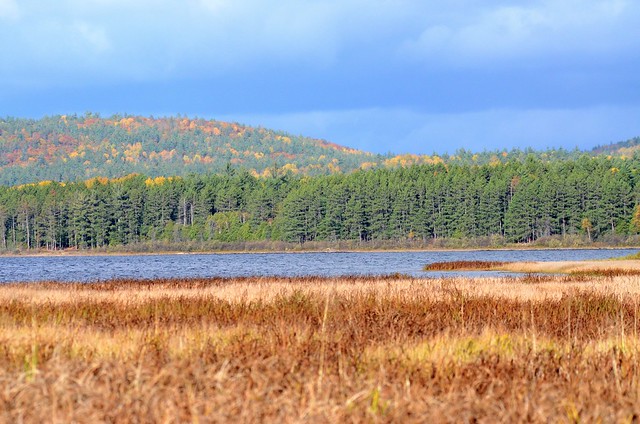
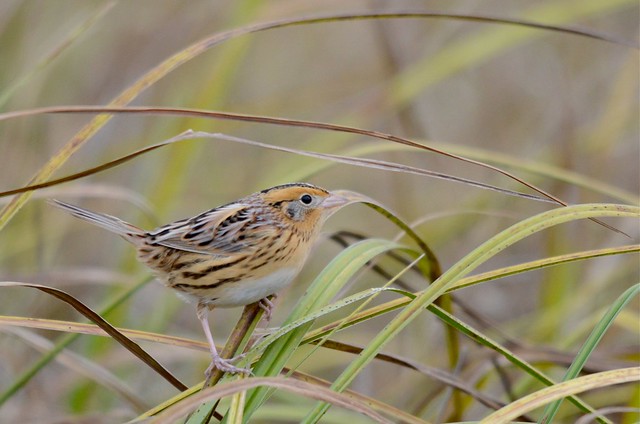

This comment has been removed by a blog administrator.
ReplyDeleteThis comment has been removed by a blog administrator.
ReplyDeleteThis comment has been removed by a blog administrator.
ReplyDeleteThis comment has been removed by a blog administrator.
ReplyDeleteThis comment has been removed by a blog administrator.
ReplyDeleteThis comment has been removed by a blog administrator.
ReplyDeleteThis comment has been removed by a blog administrator.
ReplyDeleteThis comment has been removed by a blog administrator.
ReplyDeleteThis comment has been removed by a blog administrator.
ReplyDeleteThis comment has been removed by a blog administrator.
ReplyDeleteThis comment has been removed by a blog administrator.
ReplyDelete